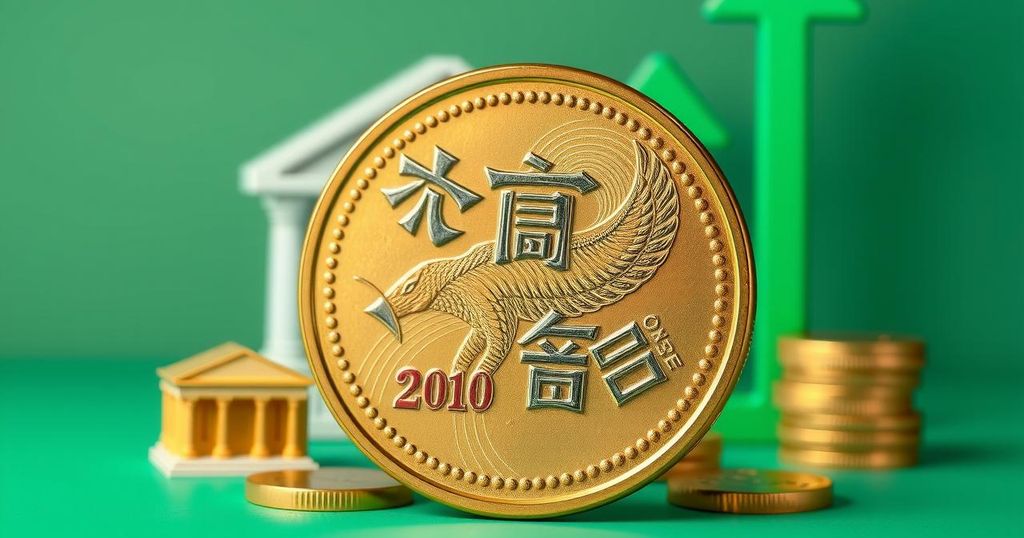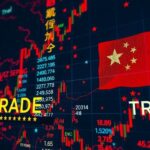Chinese Yuan Strengthens Amid PBOC Control and Tariff Uncertainty
The Chinese yuan strengthened against the dollar as the PBOC implemented tighter currency controls. Despite this, the long-term outlook remains pessimistic due to U.S. tariff uncertainties. Analysts adjusted forecasts slightly, while the economic climate in China continues to present challenges. Market participants await decisions regarding reciprocal tariffs that could further impact the currency.
On Thursday, the Chinese yuan strengthened against the U.S. dollar as the People’s Bank of China (PBOC) reinforced its control over the daily currency fix, while President Donald Trump exhibited some willingness to reduce tariffs on China. Despite this, the overall outlook for the yuan remains negative due to growing tensions with the U.S., particularly in light of Trump’s introduction of new tariffs on all auto imports.
Before the market opened, the PBOC established the midpoint rate for the USDCNY at 7.1763 per dollar, which was 965 pips stronger than a Reuters estimate. This marked the most significant deviation seen in over three weeks. Analysts at Bank of America maintained a pessimistic view on the yuan amid tariff uncertainties but modified their second-quarter forecast, adjusting it from 7.6 to 7.5 per dollar, reflecting the PBOC’s stronger-than-expected daily fix.
President Trump indicated that he may lower tariffs to facilitate a deal with TikTok’s parent company, ByteDance. Liang Ding, an economist and strategist at Macro Hive, remarked, “It’s definitely not bad news, but the uncertainty is still high.” In the morning, China’s offshore yuan, USDCNH, slightly strengthened after experiencing seven consecutive days of declines.
Market observers awaited Trump’s deadline for reciprocal tariffs on April 2, which could have crucial implications for the yuan’s stability. Ding noted that “proposals from the Secretary of Commerce and the U.S. Trade Representative regarding China’s Permanent Normal Trade Relations (PNTR) status could introduce further uncertainties to the long-term economic relationship between the two countries.”
The dollar index rose to a three-week peak overnight amid concerns that the newly imposed duties on auto imports might lead to increased inflation. By 0338 GMT, the spot yuan USDCNY opened at 7.2663 per dollar and traded 71 pips higher than the previous session, but still represented a 1.19% decline from the midpoint.
Meanwhile, China’s economic landscape is challenging, as industrial profits have declined over the first two months of 2025 due to ongoing deflationary pressures and escalating trade conflicts with the U.S. The uneven economic recovery has intensified calls for additional policy support. Central Bank advisor Huang Yiping stated that Beijing possesses considerable capacity to stimulate the economy this year, although some reforms are necessary to enhance consumption.
The offshore yuan traded at 7.2685 per dollar, reflecting an increase of approximately 0.15% during Asian trading hours. The performance metrics at 0338 GMT for various yuan trading positions are as follows:
– Spot yuan: Current 7.262, Up/Down 0.09, % Change 0.51, Day’s High 7.2667, Day’s Low 7.2595
– Offshore yuan spot: Current 7.2693, Up/Down 0.15, % Change 0.93, Day’s High 7.2791, Day’s Low 7.2667.
In summary, the yuan has shown some resilience as the PBOC tightens its control over currency fixing, amidst some conciliatory gestures from the U.S. government regarding tariffs. However, uncertainties surrounding tariffs and the economic recovery in China persist, warranting continued cautious monitoring. The interaction between U.S.-China trade relations and domestic economic policy will likely remain critical factors influencing the yuan’s stability in the near future.
Original Source: www.tradingview.com








Post Comment